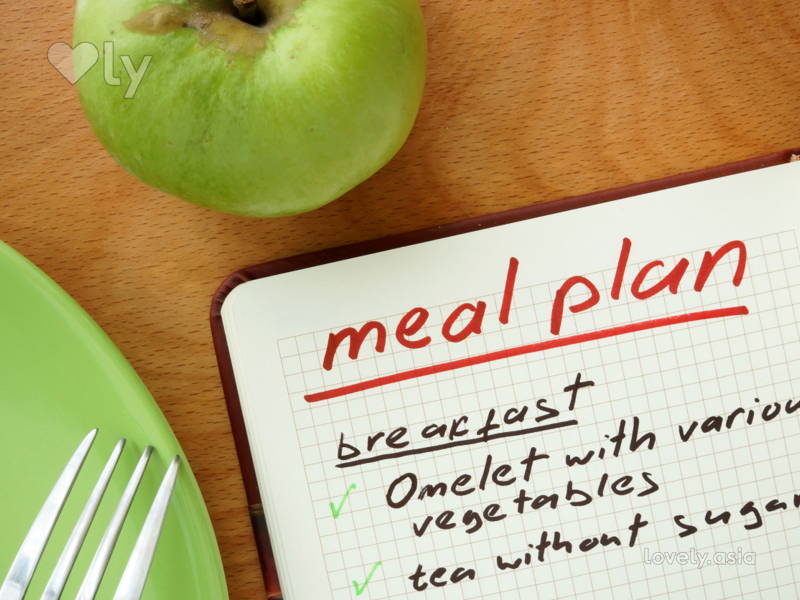Because saving money and eating healthy is a win-win situation
There’s no denying that Malaysians love good food, but the increasingly high cost of living is sure putting a damper on our appetites and wallets.
Plus, let’s be real for a second. We want good food, but can’t always afford it – both money and weighing scale wise. So, how do you eat good food that’s both healthy and budget-friendly?
If your lunch break mostly consists of trips to the mamak, then read on for the ultimate meal prep guide that will help you save hard earned cash and that bod you work so hard at the gym for!
Step 1: Get Microwaveable Containers

Before you start meal-prepping, make sure to have microwaveable containers. Having multiple containers means that your meals get packed into single portions for the week.
When you’re ready to eat, simply pop a container into the microwave oven and ta-dah, healthy home-cooked food!
Step 2: Plan Ahead for Your Week’s Menu
 You’re going to be eating the same thing for a few meals in a row, so it’s best to search for recipes that you really like, or that you don’t mind eating repeatedly. Just remember to have one portion each of protein, carbs, and vegetables.
You’re going to be eating the same thing for a few meals in a row, so it’s best to search for recipes that you really like, or that you don’t mind eating repeatedly. Just remember to have one portion each of protein, carbs, and vegetables.
Step 3: Keep in Mind Healthful and Fuss-Free Foods
 Foods like tofu and tempeh are chock-full of protein, which makes them excellent meat substitutes for vegetarians and vegans. Just add them to vegetable stir-fries, and presto, you’ve got yourself a complete meal when served with rice!
Foods like tofu and tempeh are chock-full of protein, which makes them excellent meat substitutes for vegetarians and vegans. Just add them to vegetable stir-fries, and presto, you’ve got yourself a complete meal when served with rice!
Greens like baby bok choy and cauliflower are inexpensive and super easy to prepare. Whip up a classic stir-fry or simply blanch the vegetables and sprinkle a bit of salt and pepper to fulfil your fibre quota.
Chicken makes for good protein. You could make a curry or stew, or simply steam it. Most meal prep recipes call for this super versatile meat to be marinated, then grilled or pan fried.

SOURCE: fitmencook.com
Marinade the chicken in different flavours like, teriyaki, garam masala spice rub, or even soy sauce and white pepper. This is an easy way to avoid eating the same flavours every day.
You can even throw your chicken, rice, and vegetables together to make a fried rice dish, because who doesn’t love fried rice?
Here’s the good news, an estimate calculation from Tesco for tofu, tempeh, vegetables, and chicken breasts add up to RM19.76 for roughly 5 portions. We assume you already have rice, oil, and seasoning. This means that each day’s lunch would only cost around RM4 #win.
Not only will you save money, you’ll also get to control what you consume while staying away from MSG and additives that non-home-cooked foods usually contain.
Step 4: Buy All the Food
 As soon as you’ve settled on what to cook, list down exactly what you’ll need from the grocery store or market, with their specific quantities. It will be much easier to shop with a list, because then you won’t be tempted to buy anything that’s not on it.
As soon as you’ve settled on what to cook, list down exactly what you’ll need from the grocery store or market, with their specific quantities. It will be much easier to shop with a list, because then you won’t be tempted to buy anything that’s not on it.
Pro tip: don’t shop when you’re hungry! Shopping when you’re hungry tempts you into buy excess foods or junk foods that you don’t need. So if you go weak in the knees for good ol’ potato chips, visit the supermarket after you’ve grabbed a bite to eat.
Step 5: Cook All the Food
 Choose a day when you will have time to cook and prepare all the food. Sundays are ideal because you’ll have more time to cook on the weekend, right before the work week starts.
Choose a day when you will have time to cook and prepare all the food. Sundays are ideal because you’ll have more time to cook on the weekend, right before the work week starts.
To save time and energy, you can cook different things in the oven at the same time, just use aluminum foil or different trays to separate your items. Try chicken, fish, and even vegetables. Just remember to check on the different items according to their cook times.
Step 6: Pack Them Up

SOURCE: imgur.com
Now comes the fun part. Arrange your containers neatly on a table to make prepping easier.
First start with your carbs, like rice, then proceed with the greens, and lastly, protein. As for portion size, moderation is key! Start with a moderate sized serving, have a meal, then see if your appetite is satiated. If it isn’t, try adding more protein or vegetables. If it’s too much, simply pack less food!
Be realistic when prepping your meals. Don’t pack less food just because you want to eat less and lose weight. When you get hungry, you tend to snack on unhealthy foods, so it’s best to pack a portion size that will satiate you. Even better, pack an apple or some fruits for those mid-day hunger pangs.
Once you’re done, step back and marvel at your work. Admire all the containers filled with healthy and yummy food, worthy of a pat on the back and an Instagram post.
Because saving money and eating healthy is a win-win situation

 ?>
?>
 ?>
?>
 ?>
?>
 ?>
?>
 ?>
?>
 ?>
?>
 ?>
?>
 ?>
?>
 ?>
?>


























